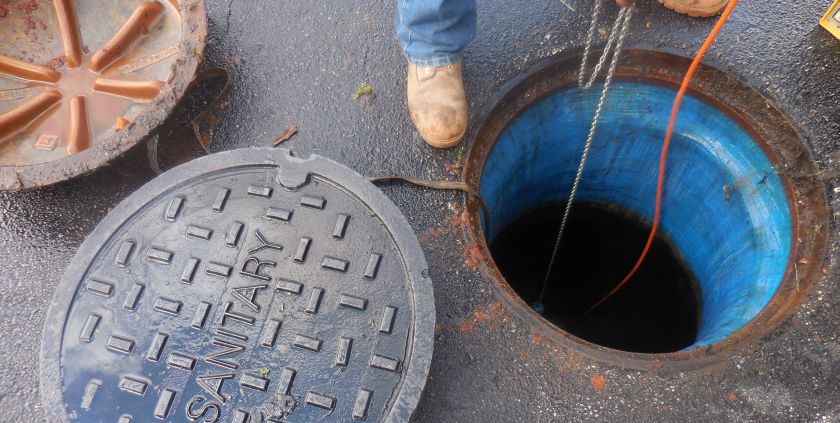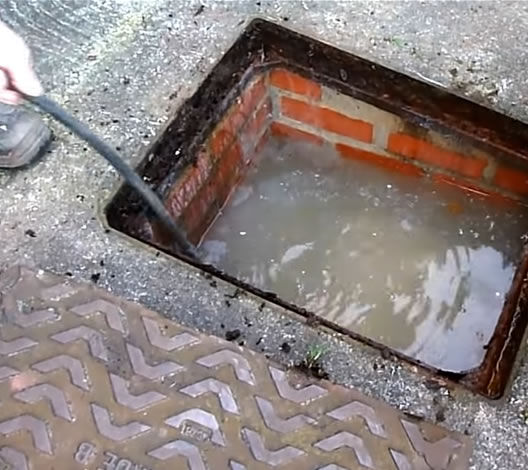How do you actually feel about What I learned from trying to deal with a clogged drain?

Intro
Dealing with an obstructed drain can be an aggravating experience, disrupting everyday activities and possibly creating damage to your home. Nonetheless, prior to connecting to plumbing experts, there are actions you can take to attend to the issue on your own. In this guide, we'll check out do it yourself options and safety nets to deal with a blocked drainpipe successfully.
Determining the Problem
The primary step in dealing with an obstructed drainpipe is acknowledging the indicators. Slow drainage, gurgling sounds, foul odors emanating from drains pipes, or water support up prevail signs of an obstructed drain. Identifying these signs early can help avoid further difficulties.
Usual Causes of Obstructed Drains
Recognizing the variables that add to drain pipes obstructions is important for effective resolution. Typical wrongdoers consist of hair, soap residue, oil, food particles, and foreign items like sanitary items or paper towels. Tree roots getting into below ground pipelines can also cause substantial obstructions.
DIY Solutions
For minor blockages, a number of DIY services can be reliable. Putting boiling thin down the drain can help dissolve oil and particles. Sodium bicarbonate and vinegar or a blend of salt and baking soda can function as natural cleansers. Utilizing a bettor or plumbing serpent to dislodge blockages is one more choice.
Devices and Devices
Having the right devices on hand can make DIY drainpipe cleansing much more effective. A bettor is a flexible device for removing blockages in sinks, commodes, and showers. A plumbing serpent or auger can reach much deeper blockages, while drainpipe cleaning chemicals can be used meticulously for persistent obstructions.
Safety nets
To avoid future blockages, embracing preventive measures is important. Install drain guards or filters to catch hair and particles prior to they go into the pipelines. Consistently flush drains pipes with hot water to dissolve oil buildup, and prevent taking care of oil or solid waste down the tubes.
When to Call an Expert
While do it yourself remedies can deal with small clogs, particular signs indicate the demand for specialist support. Relentless blockages, foul odors in spite of cleaning initiatives, or several drains pipes backing up at the same time are red flags that warrant professional treatment.
Choosing the Right Plumbing Solution
When choosing a plumbing solution, consider elements such as experience, licensing, and client evaluations. Pick a trustworthy plumbing technician with a performance history of quality handiwork and clear pricing methods.
Expense Factors to consider
The expense of specialist drainpipe cleaning services can vary depending upon the intensity of the blockage and the plumbing technician's prices. Request quotes from numerous service providers and inquire about any type of additional charges to make certain openness and stay clear of surprises.
Safety Precautions
When attempting do it yourself drain cleaning, focus on safety. Use safety gloves and eyeglasses to stay clear of contact with harmful chemicals or microorganisms. Never ever mix various drainpipe cleansing items, as this can generate harmful fumes.
Situation Studies
Real-life instances highlight the effectiveness of DIY options and the significance of prompt expert treatment in dealing with drainpipe obstructions.
Final thought
By adhering to the tips laid out in this overview, you can successfully deal with blocked drains pipes and avoid future plumbing issues. Whether going with DIY services or looking for expert assistance, punctual activity is vital to keeping a healthy and balanced pipes system and maintaining the integrity of your home.
How to Clear a Clogged Drain Yourself (And When to Call In the Professionals)
What Can Clog a Drain
Dirt Skin flakes Hair Grease Soap scum Food Offset pipes Tree roots Small objects Mineral buildup DIY Tricks to Unclog a Drain
You can fix this! Once you have identified the source of the clog (or have a vague idea), you can try one or a combination of these fixes in order to clear your plumbing.
Wire Hanger or Snake
Untangle and clear out hair from a drainpipe with a homemade snake. Use a straightened-out wire hanger with a 90-degree angle hook to locate the clog and drag out any unwanted material.
Remember not to push the clog further down to where the wire hanger cannot reach! If you need to follow up with a plunger, give it a try. Your efforts might be more successful after it’s been wire-snaked.
If you want to get fancy and don’t have a wire hanger to spare, head to the store and pick up a hand-operated drain snake. You can get one for $10-$30. It may save you the hassle, and provide additional length to reach deep into the clogged pipe.
Plunger
A cup plunger has a suction cup attached to a wooden handle. The rubber creates a seal around the drain, and increases the pressure force of the plunger.
Plunge for 30-second increments to loosen the clog. This may need to be repeated over the course of 15-20 minutes. Once plunged, run the water to flush the remaining material out of the drain.
Remember– never use a plunger if you have used a chemical drain cleaner. These chemicals can splash up from the force of the plunger and cause serious injury or burns.
Boiling Water
Hot water can sometimes break up materials into a flushable amount. Dirt, grease, and soap buildup requires heat in order to unstick from surfaces.
Take your kitchen kettle and heat your water to a boil. Once it reaches a rolling boil, pour it directly down the drain into the blockage. Carefully follow with plunging, if necessary.
Don’t worry if this takes more than one try! It can often take multiple kettles and repeated plunging in order to clear a particularly stubborn clog.
Chemical Drain Cleaner
As a last resort, pick up a bottle of chemical drain cleaner. Drain-cleaning chemicals are potent, and not very good for the environment.
You may need to wear protective eyewear in gloves before handling your bottle of chemical drain cleaner. Follow the instructions printed on the bottle, and flush with water as soon as the instructions allow. Do not follow with plunging.
Baking Soda and Vinegar
As a safer alternative to chemical drain cleaner, baking soda and vinegar can create a chemical reaction that clears tough clogs.
Combine one cup of cleaning vinegar with one cup of boiling water, and set aside. Once you have done this, pour half a cup of baking soda down the drain. Give the baking thirty seconds to settle and cover a large portion of the problem drain.
Following the baking soda, pour down your vinegar and hot water solution. Once the vinegar and baking soda combine, the mixture will bubble and fix. Let this reaction fizzle in the drain for about an hour.
After an hour, follow with a kettle’s worth of hot water. The heat and liquid should flush out any remaining material.
When to Call a Plumber
If your DIY attempts haven’t cleared your clog drain, it’s time to call in a professional. It’s not worth losing access to your kitchen sink or high-traffic bathroom. A clog in a vital area can keep you from the things you’d rather be doing, and derail your routine.
Anytime a clog is causing water to spread is a time to call in a plumbing service. What starts out as a little bit of water can quickly grow into serious, expensive water damage.
Additionally, a serious clog can result in burst pipes or serious leaks. Make sure you know when to take it seriously!
https://myguysnow.com/how-to-clear-a-clogged-drain-yourself-and-when-to-call-in-the-professionals/

As a fervent person who reads on What I learned from trying to deal with a clogged drain, I imagined sharing that short article was sensible. Liked our review? Please share it. Let someone else find it. We cherish your readership.
Call